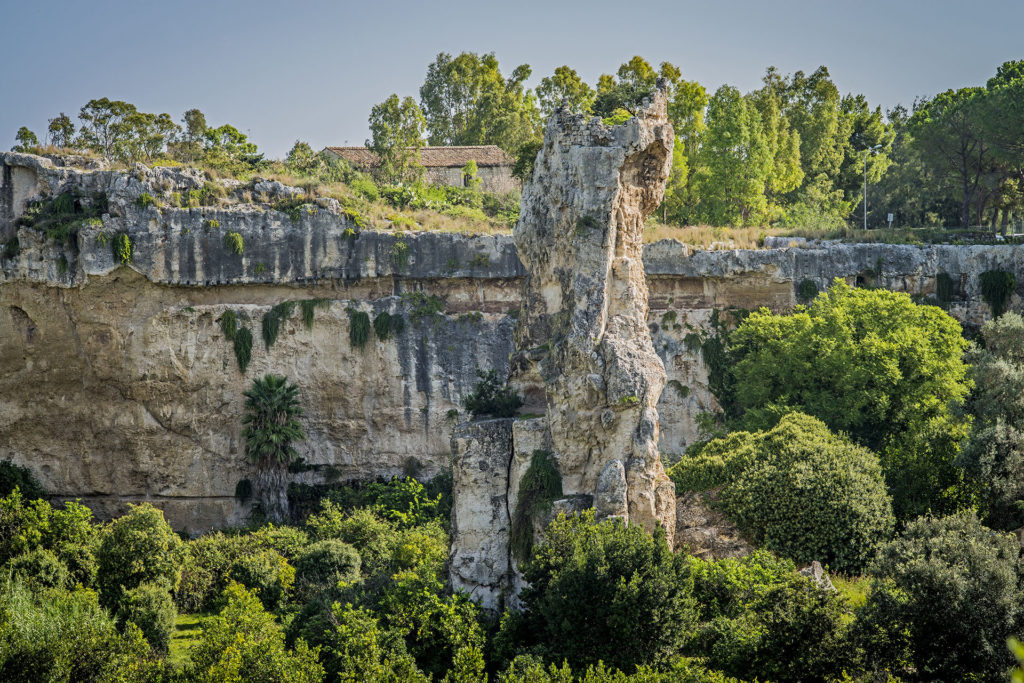The latomie are found in the northern part of the Neapolis Archaeological Park. These quarries were used in Greek and Roman times to extract the stone blocks used for the construction of temples and monuments. Their name comes from the Greek word latomìai, formed by the noun lytos meaning stone and the verb témnein, to cut.
Following the Second Sicilian Expedition in 413 BC, a hard and ferocious battle between Athens and Syracuse was fought, and the Latomie were used to imprison the defeated Athenian soldiers.
There were over seven thousand prisoners of war. On the walls of these rocky ravines it is still possible to see holes probably used to hang the chains of prisoners, who were immobilised inside these inhospitable rooms.
They were freezing cold in winter and hot in summer, and were equivalent to a death sentence for the slaves. The mysterious fascination of these places ignited the imagination of intellectuals from every period, from
Cicero
, who defined the Latomie of Syracuse as the “grandiose, magnificent work of kings and tyrants”, to
Salvatore Quasimodo
, inevitably including the main names of the
Grand Tour
, such as the painter
Jean-Pierre Houël
, for whom the Latomie of Syracuse were one of the obligatory stops on a trip to Sicily. The largest and most famous is the Latomia del Paradiso, adjacent to the theatre and the Altar of Hieron.
 Inside, there are some caves on the north-west side, including the Ear of Dionysius, a grotto with a curious S-shaped plan and an
ogival arch vault
Inside, there are some caves on the north-west side, including the Ear of Dionysius, a grotto with a curious S-shaped plan and an
ogival arch vault
.
A modern gallery connects the Latomia del Paradiso with the nearby Latomia dell’Intagliatella, from which you can access, through an arch in the rock, the Latomia di Santa Venera, whose rich subtropical vegetation makes it particularly picturesque.
These traces of an underground Syracuse extend below the urban city on the surface. There is poetic contrast between the mysterious darkness of the imprisonment and toil of the Latomie and the luminous and serene harmony of the ruins of ancient civilisations.